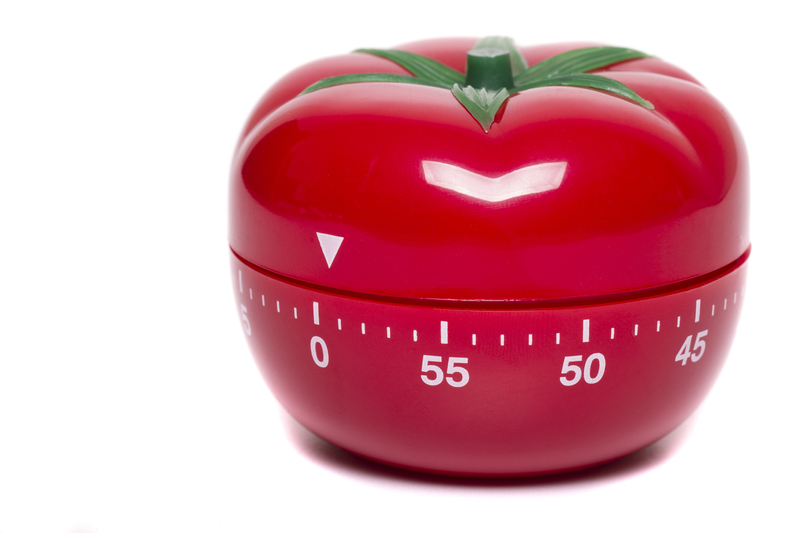Master the Art of Cleaning Mould from Window Sills
Posted on 15/09/2025
Master the Art of Cleaning Mould from Window Sills
Mould on window sills is a common problem for many homeowners and renters. Not only does it look unsightly, but it can also affect your indoor air quality and even your health. If you've noticed dark patches, musty smells, or discolouration around your windows, it's high time to take action. In this comprehensive guide, you'll discover everything you need to know to effectively clean mould from window sills, prevent future growth, and ensure a healthier home.

Understanding the Causes of Mould Growth on Window Sills
Before we dive into cleaning, it's essential to understand why mould develops on window sills. Mould spores thrive in damp environments, making window frames a prime location, especially when condensation and poor ventilation are present. Here are the key culprits:
- Condensation: Windows naturally attract condensation, particularly in colder months or in areas with high humidity.
- Poor Ventilation: Insufficient airflow allows moisture to linger, creating the perfect breeding ground for mould.
- Leaky Windows: If your windows are not properly sealed, water can seep in and encourage mould growth on wooden and even plastic sills.
- Lack of Regular Cleaning: Dirt and dust can trap moisture on the sill, providing mould spores a food source.
Identifying Mould on Window Sills
Mould comes in several forms and colours. The most common are black, green, or white patches, often accompanied by a musty, unpleasant odour. Mould may appear fuzzy, slimy, or powdery, and it tends to grow in corners or where the window frame meets the sill.
Why Is Removing Mould from Window Sills Important?
Cleaning away mould on window sills is not just about aesthetics. It's about your health and the integrity of your home.
- Health Risks: Exposure to mould can trigger allergic reactions, asthma, and respiratory problems.
- Structural Damage: Prolonged mould growth can rot wooden sills and deteriorate paint and finishes.
- Prevents Spread: Mould can quickly affect other areas, including walls and furnishings.
Step-By-Step Guide: How to Clean Mould from Window Sills
Essential Supplies for Mould Removal
Before you begin, gather these mould-cleaning essentials:
- Protective gloves
- Face mask or respirator (prevents inhaling spores)
- Safety goggles
- Plastic or disposable drop sheet (to protect surrounding area)
- Soft brush or old toothbrush
- Spray bottle
- Cleaning cloths or paper towels
- Mild detergent (dish soap works well)
- White vinegar or hydrogen peroxide
- Water
- Optional: Baking soda for persistent stains
Preparation: Safety First!
- Open the window to provide ventilation as you clean.
- Remove any blinds, curtains, or decorations from the window.
- Lay down your drop cloth to catch any falling mould or dirty water.
Important: If the mould covers a very large area (over one square meter), or if it keeps returning despite cleaning, consult a professional for help, as this may indicate a larger water or ventilation problem.
Step 1: Dry the Area
Wet or damp sills will make cleaning difficult and can help the mould spread. Use a dry cloth to blot away as much moisture as possible without disturbing the mould.
Step 2: Remove Loose Mould Growth
Gently brush any visible mould into a plastic bag using a soft brush or an old toothbrush. Dispose of the bag immediately. Do not vacuum dry mould; vacuuming can send spores airborne, worsening contamination.
Step 3: Prepare Your Mould Cleaning Solution
- Option 1: Mix one part white vinegar with one part water in a spray bottle. Vinegar is a natural mould killer and deodorizer.
- Option 2: Use hydrogen peroxide (3%) undiluted for tougher patches. Test a hidden area first, as it may bleach some paints or finishes.
- Option 3: Mild dish soap and water. Ideal for lighter mould and general cleaning.
- Do NOT use bleach on porous surfaces like wood. Bleach can damage the material and is less effective at killing all mould types compared to vinegar or peroxide.
Step 4: Apply the Solution
Spray or apply your chosen cleaning solution liberally over the mouldy window sill. Allow it to sit for at least 10 minutes. This gives the solution time to penetrate and kill mould at the roots.
Step 5: Scrub and Wipe
- Use your brush or scrub sponge to work the cleaning solution into the mould.
- Pay careful attention to corners and any cracks.
- Wipe the area with a clean, damp cloth to remove loosened mould and cleaning residue.
- For persistent stains, sprinkle a small amount of baking soda, scrub, and then rinse with clean water.
Step 6: Dry Thoroughly
Pat the cleaned area dry with paper towels or a clean cloth. Leave the window open, or use a fan to speed up drying. This reduces the chance of mould returning.
How to Prevent Mould Growth on Window Sills
Once your window sills are gleaming and clean, the next crucial step is prevention. Here's how you can keep mould from making a comeback:
- Control Humidity: Use a dehumidifier to reduce air moisture, especially in winter or rainy seasons.
- Improve Ventilation: Open windows when possible, or install trickle vents to promote airflow.
- Wipe Condensation Daily: Every morning, quickly wipe down window panes and sills to remove moisture.
- Seal Leaks: Inspect window frames for gaps or leaks and seal them with appropriate caulking.
- Regular Cleaning: Dust and clean your window sills once a week to remove spores and dirt before they can take hold.
- Use Moisture-Absorbing Products: Place silica gel packs or moisture absorbers near windows to keep the environment dry.
Common Mistakes to Avoid When Cleaning Mould from Window Sills
- Ignoring Protective Gear: Always shield your skin, eyes, and lungs from spores.
- Using Harsh Chemicals Unnecessarily: Mild solutions like vinegar are often effective and safer for your health and the environment.
- Not Drying the Area Completely: Moisture is mould's best friend; thorough drying is critical.
- Scrubbing Aggressively: Scrubbing too hard, especially on wood, can damage the sill and spread spores.
- Overlooking Hidden Areas: Always check behind and beneath window sills where mould can hide.
Safe, Eco-Friendly Products for Mould Removal
If you prefer to use eco-friendly methods for removing mould from window sills, here are effective natural options:
- White Vinegar: Kills 80%+ of mould types and deodorizes naturally.
- Baking Soda: Non-toxic and gentle, baking soda not only kills mould but also helps remove odours.
- Lemon Juice: A natural antibacterial and pleasant-smelling cleaner.
- Tea Tree Oil: Strong anti-fungal properties. Add a few drops to water in a spray bottle.
These solutions provide safe alternatives to bleach and harsh chemicals, making them ideal for households with children or pets.
Frequently Asked Questions: Cleaning Mould from Window Sills
Is mould on window sills dangerous?
Yes. Inhaling or touching mould can cause allergy symptoms such as sneezing, skin irritation, and even respiratory issues, especially for the very young, elderly, or those with weakened immune systems.
Does bleach remove mould from window sills?
Bleach can kill surface mould, but it does not penetrate porous surfaces like wood deeply enough to remove all mould roots. Additionally, the residue left behind may encourage new mould growth. Using vinegar or hydrogen peroxide is often more effective and safer.
How often should I check for mould on window sills?
Check your window sills at least once a week, especially during wet or humid seasons. Frequent cleaning and observation can stop mould before it takes hold.
What should I do if the mould keeps coming back?
Persistent mould indicates a deeper moisture or ventilation issue. Check your window seals, walls, or even the roof for leaks. It may be necessary to consult a professional to address underlying problems and prevent repeated outbreaks.

Additional Tips for Maintaining Mould-Free Window Sills
- Repaint Damaged Areas: After cleaning, repainting with mould-resistant paint can help protect against future growth.
- Monitor Indoor Plants: Excessive watering or placing plants near windows can create a moist microclimate on sills.
- Maintain Heating and Cooling Systems: Properly functioning HVAC can minimize condensation and keep your home drier.
- Weatherproof: Upgrade to double-glazed or energy-efficient windows to reduce condensation and draughts.
Conclusion: Achieving Spotless, Healthy Window Sills
Learning how to master the art of cleaning mould from window sills is an essential home-care skill. With the right supplies, effective techniques, and consistent maintenance, you can keep your home looking its best while protecting your family's health. Remember: tackling mould promptly and preventing its return is always easier than dealing with widespread infestations. Let your window sills become a beacon of cleanliness and freshness in your home!
Don't let mould take hold--use these techniques to reclaim your window sills for good. For more home cleaning and maintenance tips, explore our other articles and keep your home healthy, safe, and beautiful all year round.




